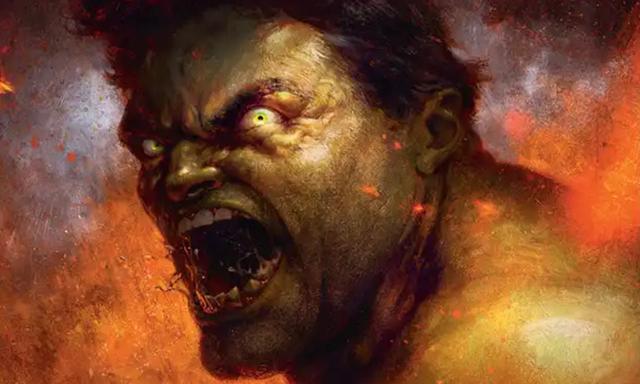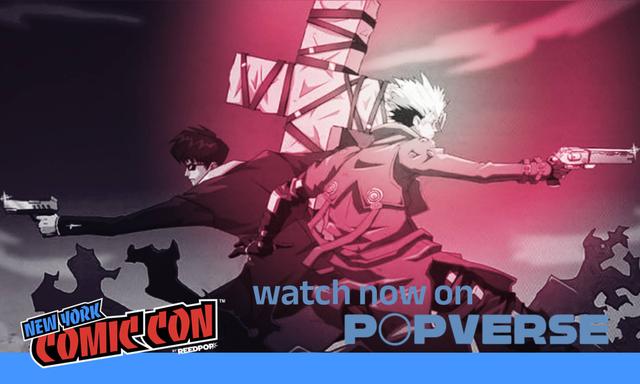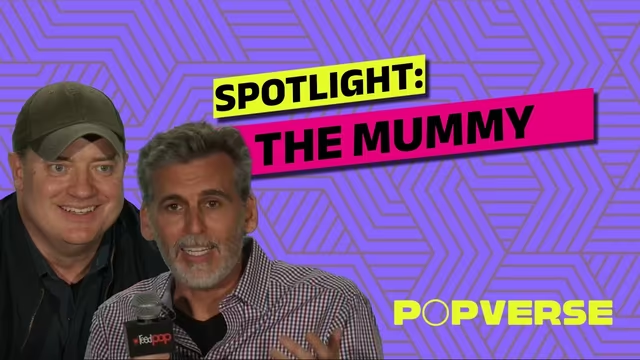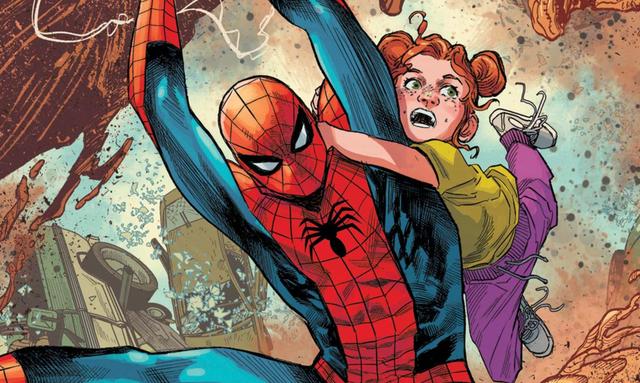If you click on a link and make a purchase we may receive a small commission. Read our editorial policy.
A survivor's guide to being a working comic book creator
Living and dying in four-color time: the ballad of the working comic creator

Do you remember your first time?
You get the call, or the email. There’s a project, a story. The team is being assembled, and it needs YOU. This is the break you’ve been waiting for. No, not waiting. Working. Hustling. Hoping for.
You hear the page rate, and that’s the pinprick in the balloon.
The number’s not impressive. At all.
But you’ll make it work. Everyone has to start somewhere, right?
Take a loss today for the big win tomorrow.
You accept the assignment.
You got this.
Your future begins now.
Welcome to the slow death spiral.
The Page Rate Economy within the comic book industry

The Page Rate is the primary unit of measurement that determines the underpinning of your career in comics.
The Page Rate Economy governs the single-issue comic book production pipeline widely used in the English-speaking comics world for publishers like Marvel and DC on down to smaller independent outlets. This is known as the 'Direct Market.'
There are generally four general categories of page rates: Low. Medium. High. Stratosphere.
Whether you’re a writer, artist, letterer, or colorist determines the kind of numbers you’re dealing with…
…but can you live off of those numbers?
As of the first quarter of this year, the top 10 companies making monthly periodicals in the Direct Market of distributors, retailers, and publishers were Marvel Comics, DC Comics, Image Comics, BOOM! Studios, Dark Horse Comics, IDW Publishing, VIZ Media, Dynamite Entertainment, Kodansha Comics, and Seven Seas Entertainment. The budgets differ considerably within them, not to mention the independent publishers who don’t make the top of the food chain but represent an access points for creators to start their careers.
I’ve worked for legacy companies with corporate wealth, new companies with independent wealth, and old companies with illusory financial resources. I’ve hired creators and offered rates both impressive and uninspiring. Asked for creator raises with a determination that made my supervisor’s skin go red like Hellboy’s. Negotiated with supervisors who achieved figurative (and possibly literal) orgasm when getting creators to take on gigs for poverty rates.
It’s a messy aspect of the business, the thing no one on either side of the desk really wants to discuss, but everyone takes on with the desire to close Glengarry Glen Ross style.
So let’s look the elephant in the eyes and get it out of the room. Dig into the interior story page rate range for different creative categories, the highest of which are subject to variables like the character/IP you’re working on, if you’re under an exclusive contract, your popularity, and your ability to sell a certain number of units based on your fan base, AKA 'putting asses in the seats.' Many thanks to Tim Seeley, Ray-Anthony Height, Deron Bennett, and Bon Alimagno for their input and insights.
For comic book writers, it looks like this:
- Low: $60-$80 a page
- Medium: $90-$120 a page
- High: $125-$130 a page
- Stratosphere: is in the $500-per-page range
Comic book artists, meaning you’re penciling and inking your work:
- Low (as in 65% to 70% of working artists): $125-$150 a page
- Medium (20% to 25% of artists): $300-$500 a page
- High (about 2% of artists): $550-$800 a page
- Stratosphere: $1,000 and up
Comic book letterers are looking at:
- Low: $10 a page
- Medium: $15 a page
- High: $20-$30 a page
- Stratosphere: In the $40per-page range
If you’re a comic book colorist:
- Low: $75-$80 a page
- Medium: $90-$100 a page
- High: $115-$135 a page
- Stratosphere: starts at $140 a page
If we compare these numbers with the page rates recommended by the Comic Book Creators Guild 45 years ago, it’s scary to see how similar the numbers of today are to a time before deep corporate involvement in top publishers (outside of DC, who became part of the Warner empire in the late '60s). That's before Disney bought Marvel and the Image Comics founders changed the conversation about creator compensation forever.

It's common knowledge that the top publishers don’t always pay the top rates, and in fact, paying low and earning high is one sure way to maintain a certain profit level month-to-month, quarter-to-quarter, year-to-year.
One source of competitive rates isn’t even within the top ten Direct Market publishers. It’s with crowdfunded projects.
Oh yes, people with dreams of being an independent comic book publisher and the financial resources to make it happen (likely through a 9-to-5 job) want their books to be top quality, able to compete at every artistic level with Marvel and DC Comics. They will pay creators between median and high rates to get that quality. But of course, those kinds of projects are generally few and far between, so they don’t make for a stable financial lifestyle in and of themselves.
The issues of being a creator of comic book issues

Honestly, though… do projects from top 10 publishers provide the income needed for a comfortable life? How many comic book pages do YOU need to produce to make enough money to cover the dollar amount of your monthly expenses?
Whatever the number is also has to take into account the deductions for your annual taxes.
Do you live in the East, West, or middle of The United States?
Do you live somewhere in the world where the U.S. dollar is stronger than your national dollar? If so, any given publisher knows they can pay you less than they would for an American counterpart… unless you have a really good agent. If you’re a U.S. creator, publishers can use the pay structures for non-U.S. creators against you when it comes to negotiating rates.
Do you have dependents? Are you saving up for your child’s college education? Do you own a house, which is your own personal money pit?
Are you saving money on a regular basis? Maybe…but how many hours a day do you have to work for it? The average is 10 hours a day, but is that really enough…or do you have to push it to 15 hours a day?
Is that a five-day work week? Unlikely. So six days a week. Maybe seven.
That’s anywhere from 60 hours to 105 hours per week. Which means you’re going from working 50% more hours than the average 9-to-5’er to approaching burnout levels. But burnout is inconvenient. You don’t have the time to get sick and take a few days off to recover.
Do you have health insurance? Good health insurance? Or is it an expense you can’t take on, hoping against hope you never get into an accident or have a need for regular medication?
You really can’t afford to take a break, so you suck it up, working while you’re sick 'because the deadlines don’t care'. The deadlines you get from your client. Deadlines which are sometimes at the bleeding edge of the print schedule, leaving you no wiggle room in an industry where missing tomorrow’s deadline puts a stain on your name when it comes time for editors and talent managers to consider you for future work.
The bleeding edge of the print schedule has become less of an anomaly and more of a standard operating procedure, forcing you to push yourself beyond reasonable limits to solve a problem, just to encounter the same problem next month.
How do the limits to which you’re pushing yourself sit with your clients, the publishers? The editors may care, but they’re slaves to the publication schedules. Talent managers may or may not care, depending on a variety of factors including where you sit in the food chain of a book, series, or the company in general. Even high-ranking officials may care, but they trust their lieutenants to handle situations.
The publishers are primarily concerned with the smooth continuity of business, the maintenance of intellectual property through regularly publishing a certain volume of books based on their needs and the expectations of their parent companies or investors.
They do NOT automatically assume the moral or ethical responsibility of taking care of YOU, the creators, as individuals or a community. Profit and Loss are the deities to which they bow and serve.
So you burn out at your own peril, and based on the fact that the majority of creators in comics are not earning the high rates, it’s either a fragile stability resting on median rates, or low rates which in no way provide a survival income.
How many years can you maintain this hustle and work to the limit, in order to compete with your peers and climb up the ladder to the high rates? Keeping in mind the odds against you increase the further up the ladder you climb, because the pressure to maintain the high quality you've achieved to earn the high rates is real.
How long can you make it last before a newer generation of creators emerges? Creators whom the publishers can get to do the job for those good ol’ low rates?
Can you hustle your way up to working on That Character? You know the one. The one for whom various creators have been able to put a down payment on a house, get the good royalties, and elevate themselves into life-changing creative and financial opportunities.
Can you escape the death spiral of diminishing health, the diminishing time you’ll have at the apex of your success, and diminishing awareness in a changing landscape of editorial staffing shifts and publishing in which a superhero dog, kids with diaries, and manga are eating your clients’ lunch in sales?
The models for working in comic books

Let’s look at a few options on our menu.
The diversified portfolio model
There’s the diversified portfolio model, which appears easier for artists than for writers, letterers, and colorists.
- Monthly page production
- Sales of original art starting the day the corresponding comic book hits the shelves
- Commission artwork for private clients and auctions
- Prints of art created specifically for mass sales at conventions or online
Community-funded portfolio model
We also have the community-funded portfolio model, which has and continues to be utilized by writers.
- Page rate income
- Patreon
- Substack newsletter paid subscriptions
The binary model
It’s trickier for colorists, but this is a solid binary model.
- Monthly page production
- Prints of art created specifically for mass sales at conventions and online
All of the above have the additional entrepreneurial side dishes of a) online and in-real-life for-pay workshop courses, and b) general creative work outside of the Direct Market comic book industry.
Each business model is a fine-tuned, well-structured business apparatus requiring you to have time to run it or hire someone to manage it for you.
It’s a lot of damn work. More than you bargained for. More than you want. Enough to resent. But if you want to know the alternative…
…talk to the living legends who created multimillion dollar intellectual properties, suffering with terrible health and inadequate finances to take care of themselves while their visions are realized on streaming shows, merch, and big screen productions.
Talk to your friends in the industry with little to no savings and zero equity.
Think about our fallen heroes, friends, mentors, and peers in the industry. Gone too early. Their legacies reprinted and remixed for profit and the highest levels of posthumous public respect, like the never-ending selection of new musical tracks from dead hip-hop artists.

Maybe you can navigate your career in the middle of the road, but with the comic book industry’s increasing product volume and demands from on high that trickle down to the creators, a greater likelihood is that you’ll burn out…unless you choose to execute up.
Otherwise, you could find yourself in the twilight years of your career in need of the holy trinity of Kickstarter, GoFundMe, and The Hero Initiative to save you.
There’s a saying, 'Getting in comics is easy. Staying is hard.', but the harder thing, the real trick…
…is surviving comics without ending up on your back with a tire tread across your body and your stomach burst open like roadkill.
Over the next few months, Joseph Illidge will be writing a regular series of essays about comics- the medium, the message, the industry, and the community - from his vantage point as a comics writer, comics editor, Comic Book Legal Defense Fund board member, and owner of a movie production company.
This is Joe Illidge's Adventures in the Champagne Room.
Follow Popverse for upcoming event coverage and news
Find out how we conduct our review by reading our review policy
Let Popverse be your tour guide through the wilderness of pop culture
Sign in and let us help you find your new favorite thing.
















Comments
Want to join the discussion? Please activate your account first.
Visit Reedpop ID if you need to resend the confirmation email.